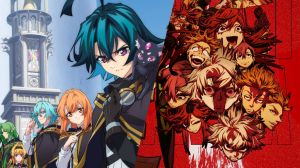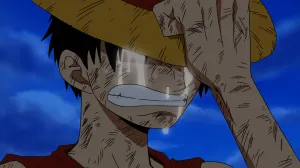
The new Netflix series The Punisher has sparked a lot of great conversations surrounding one of Marvel Comics’ most enduring, popular, and controversial characters. All of those elements are well-earned, but one recent series has managed to do the man justice.
Videos by ComicBook.com
The Punisher was unlike anything at Marvel when he debuted in Amazing Spider-Man #129, and he remains the superhero archetype of the grim, murderous vigilante. His stories have been told by some of the most talented creators in comics, and many of both the serious and ludicrous examples have aged very well. In addition to all that, the character taps into themes of violence, gun control, obsession, and revenge. It’s a potent concoction, and one that is difficult to get just right. Yet Punisher: The Platoon, the new mini-series from writer Garth Ennis and artist Goran Parlov, is the perfect alchemical combination of all these elements.
Punisher: The Platoon focuses on the story of Frank Castle before he became The Punisher, during his first (of three) tours in the Vietnam War. The story alternates between the past and present as a writer interviews witnesses in the former and their stories are illustrated in the latter. This structure balances the inevitable tales every reader associates with the character with a slightly more human version of Castle. In the resulting story, only two issues in thus far, there’s a lot to be learned about how to get a Punisher just right.

Frank Is Not A Hero
While Frank Castle may be the protagonist of most Punisher stories, he should never be the hero. This is a difficult line to walk, and might be the most common pitfall for creators crafting new Punisher stories. The problem lies in the very premise of the character though; The Punisher is a mass murderer who not only breaks the law, but holds the justice system in contempt. He executes criminals for myriad crimes, including selling drugs, smuggling weapons, assault, and far more serious offenses. The Punisher doesn’t simply look bad when compared to the high standards of superheroes, he looks bad when compared to many modern dictators. Even in his most conservative modus operandi, The Punisher breaks any reasonable constraints on capital punishment or self-defense.
If creators attempt to transform Frank Castle into a hero, much less a superhero, then they must reconcile his actions. That task is impossible to begin with, but should not even be considered desirable based on what must be justified. None of this means that there should not be stories about The Punisher though, it simply means that the classic tales of hero and villain cannot fit the character. That’s something Ennis has always understood in his own tales, and that Punisher: The Platoon gets perfectly.
Even as a soldier fighting in Vietnam, both serving his country and protecting the men in his unit, Frank Castle is not a pure hero. This is a setting that lends itself to a morality tale, but his actions are often delivered in moral grays. When killing enemy troops or ordering an air strike, Ennis and Parlov do not make the morality of any situation obvious. There is no grandstanding within the comic and no overtly evil enemies. Frank Castle is an effective soldier, but his motives for being so good at what he does are hazy. Even in a role where he might be honored as a hero, it is made clear to readers that this man is defined by characteristics very different than heroism.

Outside Perspectives Are Emphasized
If Frank Castle is a character that should not be admired and whose actions are beyond the pale of basic morality, then how do creators construct a tale around him? Utilizing those affected by The Punisher is one of the best ways to tell a story featuring the character. Focusing too much on Frank makes it difficult not to create excuses for his actions or rationalize in his speech or thoughts. Outsiders provide new perspectives that can better analyze both the character and why we as readers enjoy reading about him. These outside voices can include fellow veterans, reporters, enemies, bystanders, and those saved by his actions. Together this chorus helps build a far more complex and complete picture than one focusing solely on the actions and thoughts of The Punisher himself.
This emphasis of outside perspectives has been a defining element in much of Ennis’ work with The Punisher. Many of the stories in his MAX run either provided B-plots focused on new characters, framing devices of novels or articles written about The Punisher, or companions attempting to understand Frank. He even utilizes Nick Fury, in his own series Fury, to briefly observe Castle as a soldier and provide some astute observations.
In Punisher: The Platoon, Ennis and Parlov have crafted three key perspectives. There is the journalist obsessed with understanding what made The Punisher who he is and two sets of interview subject: surviving members of Frank’s platoon and surviving Viet Cong vets who fought against Frank. Together these outlooks vary widely and are fascinating when set side-by-side. Even though Frank has no voice within the series so far and no presence in the present, there has not been a better distillation of the character in recent history. The series allows others to disassemble the character in a kaleidoscopic vision – allowing for his complexity to shine through.

Violence Is Never Enjoyable
At the heart of everything discussed so far is the issue of violence. The Punisher is defined by violence. It what makes him a terrible hero and someone so difficult to empathize with, yet it is also what makes him an endlessly fascinating character. At the heart of every great Punisher story are questions of what, why, and how regarding how a human might become like this or even embrace becoming like this. Those are difficult questions and they deserve difficult answers.
In order to provide those answers, violence cannot be embraced as subject matter. It must remain brutal and alienating. If violence is celebrated in The Punisher, then The Punisher is celebrated. So even if there is some joy to be found in well-depicted violence, the subject itself can never be celebrated. This is the final element that makes Punisher: The Platoon and much of Ennis’ other stories about the character work so well; violence is never celebrated.
Parlov’s depictions of a battle in Punisher: The Platoon #2 is relentlessly brutal. Bayonets and bullets shred human bodies, and every dying man is obviously human. Both American and Vietnamese soldiers look unique and their expressions reveal the desperation and pain in the discovery of death. The violence is a stunning depiction and great example of comics storytelling, but it is intended to also leave readers shellshocked. This depiction of the heart of The Punisher helps ensure that every other element within the story functions as intended. As Parlov and Ennis reveal the horror of violence, they also unmask the complexity of Frank Castle.
It’s difficult to read portions of Punisher: The Platoon, but it is even more difficult to look away once you begin. That’s what makes this series such an effective example of how to tell a Frank Castle story well.








